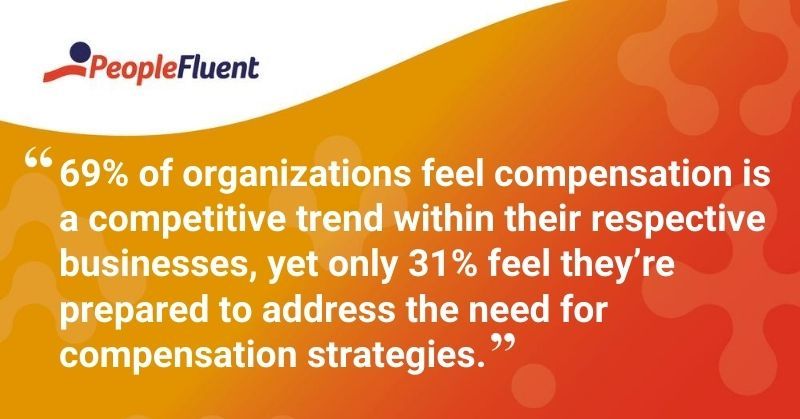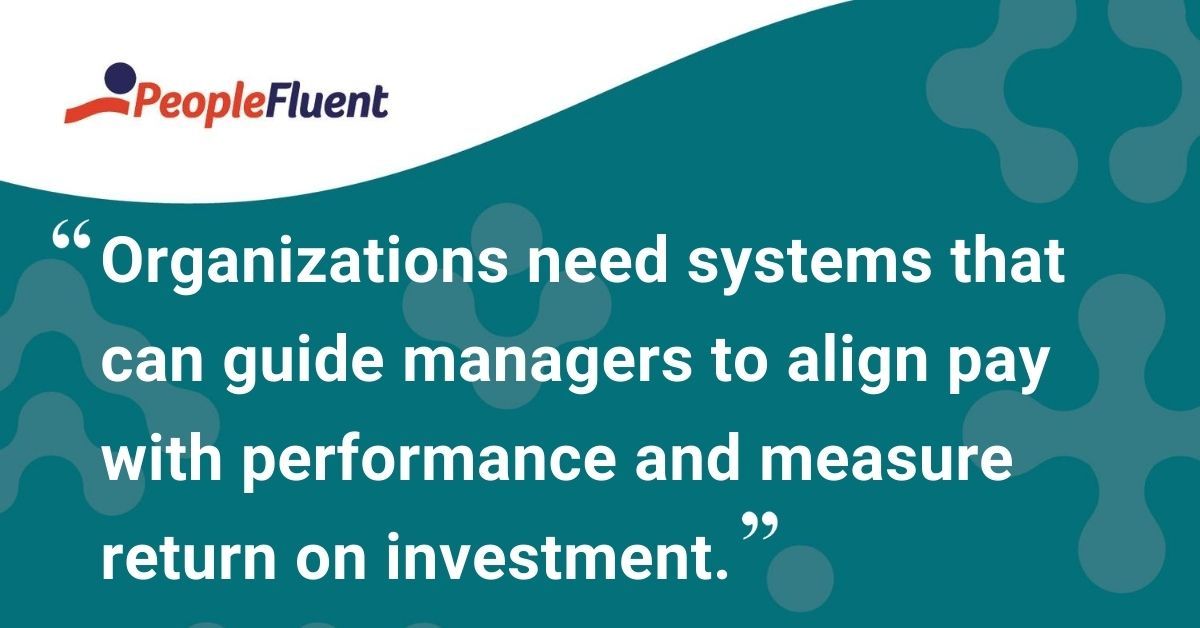Published: Aug 20, 2020Time to read: 6mins Category: Compensation
3 Ways to Innovate and Improve Your Compensation Design Process
As companies continue to move away from ratings-based annual performance reviews, HR leaders and compensation managers are looking at how to move away from the merit matrix and other traditional pay-for-performance programs. Organizations need to pay attention to the ongoing improvement cycle for building a structured compensation process. By leveraging multi-variant analyses, comparison groups, and advanced calculations to foster innovation, companies can reduce adverse impact and drive positive business results.
As compensation continues to be one of the top five reasons an employee leaves their current job, innovative organizations are looking for new ways to retain their top talent and reduce the cost incurred by high employee turnover. By improving their compensation design programs, savvy companies can attract new and better talent by providing their current employees with more reasons to stay.
Organizations risk misspending billions of dollars every year without materially affecting business results. Given the former issues of employee retention, coupled with the current fragile U.S. economy, how are HR leaders encouraging compensation teams to drive competitive advantages?
In this article, you’ll find information about the state of performance-based pay and three ways to improve your compensation design process.
You might also like: ‘4 Dangers of Using Spreadsheet Templates for Compensation Planning'
The State of Pay for Performance
Across different industry segments, there’s a growing need for an innovative approach to compensation strategies. Based on a Deloitte survey, 69% of organizations feel compensation is a competitive trend within their respective businesses, yet only 31% feel they’re prepared to address the need for compensation strategies.
Many companies still leverage traditional models, like the merit matrix, to deploy compensation and rewards. While most of these provide a wide swath of methods to use when determining performance-based salary increases, they often fall short. Why? The problem is most managers don’t use the information or data provided when deploying compensation.
While the main goal of a compensation strategy is to ensure that the distribution fits the overall reward, compensation managers may cause undue friction if they lack the means to justify such a disbursement. Every compensation committee and executive will want to understand that the money being deployed is aligned with the success of the business.
For example, if two-thirds of the organization isn’t meeting performance expectations, executives will see no justification for a manager to approve a disbursement to the underperforming population.
Although manager interaction shouldn’t be replaced when calculating compensation or rewards, they should have easy access and proper training on how to leverage data to make better-informed pay and rewards decisions.

Related content: ‘Why It’s Time to Abandon the Merit Matrix'
1. Create a Structured Compensation Process
Successful compensation strategies are supported by advanced tools that can navigate the complexities of modern compensation plans. Organizations need systems that can guide managers to align pay with performance and measure return on investment. The true measure of ROI for an effective compensation strategy includes higher retention, positive employee engagement, and increased productivity.
Any capable compensation program should be able to provide managers with the necessary data elements and customizations required to navigate complex compensation plans. Here are a few tips for creating a structured compensation process that will provide this return on investment:
- Use data to create structured job descriptions, for internal and external candidates, that focus on job leveling and the role’s core requirements.
- Establish a process for maintaining market research based on locations and roles to ensure the salaries you’re paying are competitive.
- Analyze and review personnel decisions that influence pay (e.g. assessments, performance management, and evaluation criteria).
- Include data elements that make it simpler for HR and management to monitor discretionary awards. For example, position relevant variables (by grade and job family), education, certifications, years of relevant experience, promotability, proficiency levels, and loss impact.
Continue to review and refine the compensation and performance processes and systems.

Keep reading: ‘The Real Cost of Pay Inequality: More Than Just $160 Trillion’
2. Avoid These Common Mistakes
1. Aggregating discretionary spend by management without the proper oversight. While this may be a common practice, it doesn’t meet the requirements of an effective compensation strategy; it’s simply administering and aggregating distributions.
2. Establishing a quick fix without creating a long-term strategy. Rolling out an overly-complicated plan that includes too many data elements may be difficult for managers to tackle. Compensation models should be built out based on the level of complexity that compensation managers can manage and understand.
3. Waiting until other talent processes are complete before reviewing the pay process. There are necessary data elements—like performance reviews—that feed into the compensation process. Many of these are required in the midst of a planning cycle to ensure accurate forecasting. By leveraging technology to dynamically add the necessary elements in real time, HR leaders will be able to create more accurate salary distribution.
4. Not reviewing and auditing processes on a continuous basis. The salary planning process should never be a one-and-done approach. There will be annual changes to incentive plans and salary, especially due to market changes and/or changes within the business.
More from the blog: ‘The Top 4 Benefits of Using Compensation Management Software’
3. Build a Business Case for Change
Based on quantitative analyses, there’s a negative correlation between the presence of pay inequity and key measures of employee engagement. In other words, unfair pay practices can have a negative impact on employee engagement and organizational performance.
To ensure your organization is ready to avoid unequal pay practices and facilitate a more productive workforce, you’ll need a practical business case that highlights the value of a new compensation program.
It should include the following:
- Develop a formal communication plan to address the gaps in a manager’s comprehension of the compensation process. Resource libraries and instructional videos can be helpful tools for managers to better comprehend the process.
- Outline which systems, processes, and people will be necessary to elicit a significant ROI for the business and executive boards.
- Leverage hard facts, data, and models along with feedback from management to support your case. Managers should encourage their employees to ask questions regarding compensation as this ensures a steady flow of feedback for HR and compensation teams to examine.
This process requires savvy compensation managers who can effectively present and articulate at the board level as well as to compensation committees. The latter ability is what defines and differentiates a manager’s ability to be successful in deploying data-driven salary increases based on merit.
To learn more about leveraging these innovative compensation trends and driving value with a structured compensation design, listen to a recording of the webinar, ‘Innovation and Continuous Improvement in Compensation Design’.
Discover How to Reward People and Stay Competitive
PeopleFluent software provides the tools to help you plan and execute complex compensation plans, so you keep within your budget while attracting, rewarding, and retaining top performers.